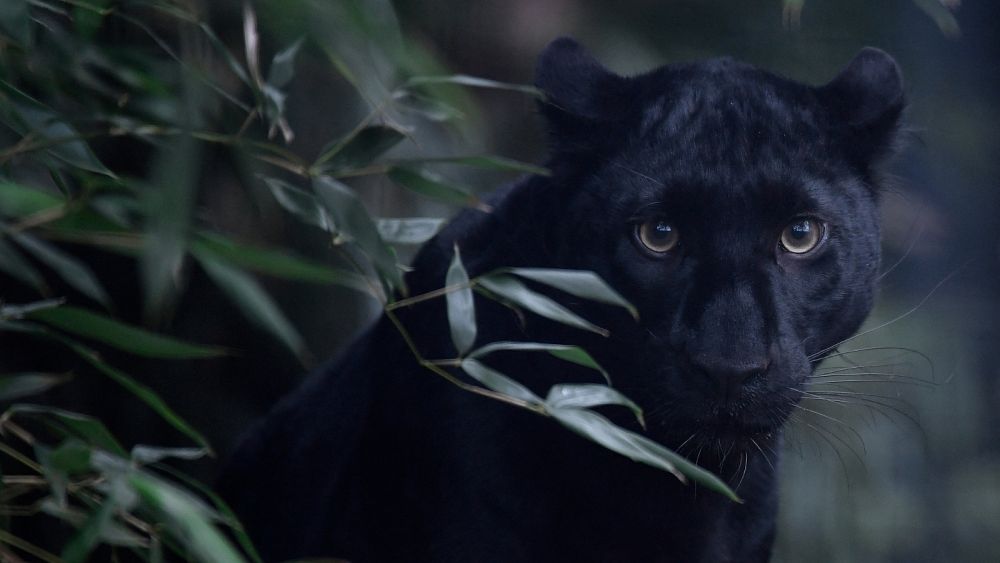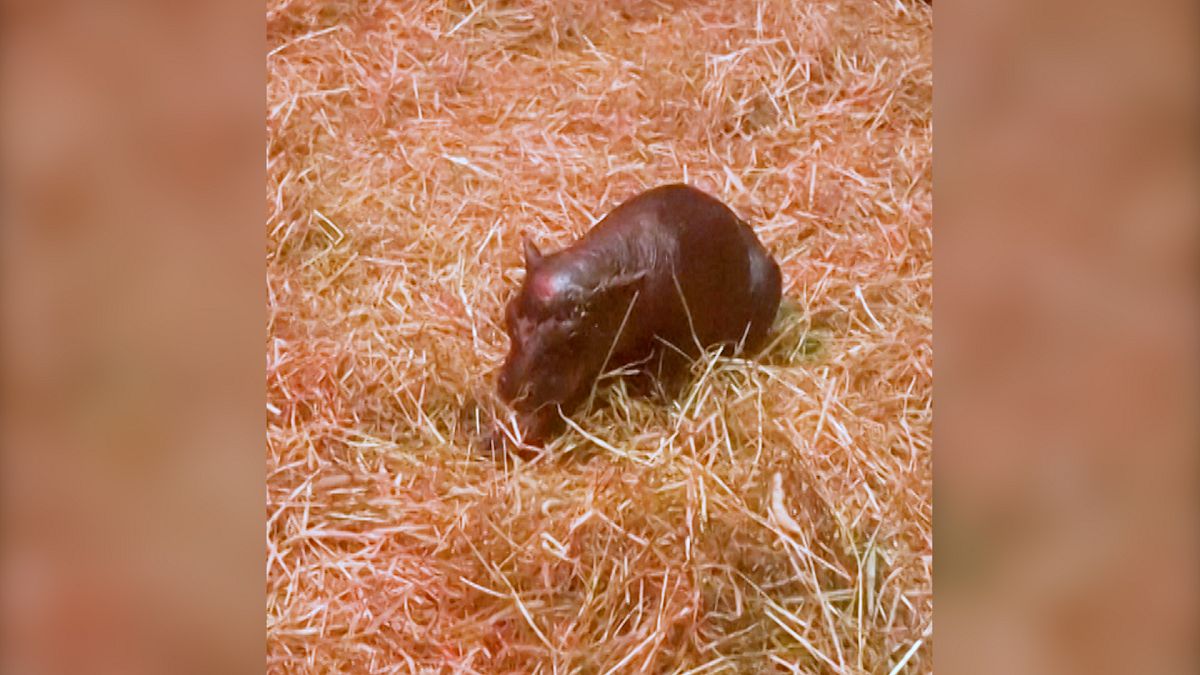Pumas, lynx and panthers: Are big cats really roaming Britain?

New DNA evidence suggests there are potentially hundreds of apex cat predators in Britain – as local groups play wildlife detective to prove their existence.
Driving in the Scottish highlands in early May, tourist Lottie Hodson did a double-take when she saw the sleek black smudge at the treeline’s edge.
Alerting her brother Ed and their friend Bella Firth, the trio stopped the car to try and get a better look. What they saw left them shaken, excited, and reaching in vain for their camera phones.
“I just pointed out the window and said ‘stop the car there’s a panther!'” Lottie tells Euronews.
“It was a woodland area, and the creature was bigger than a labrador with a long tail and all black, jet black,” she explains.
Perhaps unwisely they got out of the car to try and find the animal but it had already disappeared.
“Some people in the local pub said it could have been a ‘kellas cat’, but whatever it was, it was a very cool thing to see,” she adds.
Kellas cats, only identified in 1984, are a cross between the Scottish wildcat, native to the Scottish Highlands, and a domestic cat. They’re usually black with a long tail, and much bigger than your average pet tabby.
However, experts believe what Lottie saw could very well have been a big cat: A black panther from the genus Panthera pardus, born in the wild and living free, but secretive and almost invisible to the public.
New evidence revealed recently provides yet more proof that big cats could be on the loose in Britain.
Hair samples taken from a barbed wire fence near the site of a dead sheep in South England tested positive for black panther DNA after a documentary film crew followed the sample to a laboratory.
Big cat release events
Experts believe there have been a few ‘release’ events during the last century which kept Britain’s big cat population healthy.
The first was during World War II when zoos got rid of them because they weren’t able to provide the strict diet of expensive, rationed meat.
The second big release event happened after 1976 when new legislation made it illegal for British shops like Harrods to sell exotic pets and individuals didn’t want to comply with strict new rules for keeping big cats in their homes.
There have also likely been individual releases over the years with animals kept as pets, or in private zoos and circuses, which escaped or outgrew their owners’ ability to care for them properly.
“There are 40 species of wild cats overall, but the ones we’re interested in Britain are the ones big enough to kill a deer. That’s the yardstick when we assess a photograph or talk to a witness, we are thinking are they big enough to take down a deer because that is the prey in their ecosystem,” explains Rick Minter, an amateur big cat expert and field biologist who tracks and documents sightings on his Big Cat Conversations podcast.
“By far the most commonly described big cat is a black panther. Also called black or melanistic leopards. They’re similar to black jaguars, but sleeker, and just like other big cats of the world they are much more stealthy than they realise. They see us as an injury risk, they don’t see us as prey items,” Minter tells Euronews.
Around 80% of the big cat sightings in Britain each year are of black panther-type animals. Another 15% of sightings are for tan pumas, mountain lions or cougars (_Puma concolor),_with some reported lynx (Felis lynx) sightings making up the rest, experts say.
“We see those three consistently year on year,” explains Minter. “The other thing is that in about a quarter of all reports, people have a dog or horse with them and those animals are reacting to the nearby presence of a big cat.”
“It’s not just the humans reacting, it’s another animal reacting in a freaked-out way that there’s something out there,” he adds.
How many big cats could there be, and what do they eat?
To have a healthy and established population of black panthers or tan-coloured pumas, experts estimate there would need to be a minimum of 300 of each animal spread throughout the UK.
In their native territories, black panthers could roam up to 50km, and if there were clusters of females, the males would go from group to group during mating season.
Their primary food source in Britain would be deer — and there’s an estimated two million deer roaming the UK.
Panthers or pumas need to kill a big adult deer once per week, eating it in two sittings. Then they either fast between kills or ‘snack’ on smaller prey animals like rabbits.
“During 2023 I have seen directly two deer carcasses which were completely hollowed out, freshly killed, and not in my view scavenged by foxes after road kill. And I’ve seen photos from about seven more kills,” says big cat expert Rick Minter.
The deer were surgically stripped, just as he’d expect from a wild big cat kill.
This trait would also not be seen if a zoo-raised animal had hunted the deer, something he says is another clue indicating there are well-established populations of big cats in Britain.
Big cats are much less likely to take sheep, amateur biologists say, seemingly preferring wild deer instead. Minter says that one gamekeeper contacted him with suspicions of big cat predation at the rate of four or five shep each month.
As an experiment, he dipped half the sheep flock in insecticide and fungicide and found dead sheep only in the other, untreated half of his flock.
When he later dipped the remaining sheep in insecticide and fungicide, the killings only happened among the first half of the flock, when whose chemicals were wearing off.
The implication being big cats are deterred by the artificial smells of the chemical-treated sheep, instead preferring natural deer.
“When we swab a carcass, DNA is hard to get, but it does prove that people who give descriptions are correct,” says Minter.
“Scientifically it is important, as this may be our own evolving subspecies of black leopard here in Britain. In their wild habitats in Java and the Malay Peninsula, their numbers are declining due to poaching, so our domestic population here might be needed to save the species,” he adds.
If the big cats are not stressed and have enough food to eat, Minter says they will stay away from humans.
“They are more scared of us than we are of them.”
Source: Euro News















